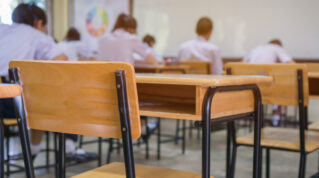Around one in five pupils in England are at risk of falling below the government’s new mandatory threshold for absence fines, new analysis suggests.
And children eligible for free school meals and those with special educational needs and disabilities are “disproportionately” more likely to face fines under the new regime.
The Department for Education last week published new guidance on dealing with absences that will become statutory from September.
This includes a requirement to consider issuing fines for pupils who miss 10 or more half-day “sessions” to unauthorised absence in rolling 10-week rolling period.
But analysis by FFT Education Datalab of absence statistics for the 2022-23 academic year found around one in every five pupils nationally – around 1.7 million children – would have fallen below the threshold had it been in place that year.

In contrast, councils issued almost 400,000 penalty notices last year, a record high. Schools Week revealed last week how councils raked in over £19 million in fines revenue in 2022-23.
Figures range from 15 per cent of year 3 pupils to 23 per cent of those in year 10. And “most” year 10 pupils who fell below the threshold fell below it more than once.
Datalab added that it would be “under-estimating the number who would have been risk had the proposals been in place in 2022-23”.
This is because it did not consider 10-week periods that overlapped with the previous or following academic year, which will be in scope of the DfE’s threshold.
‘Stark differences’ for disadvantaged pupils
Breaking down the data for those eligible for free school meals at some point in the past six years reveals “stark differences”.
More than four in 10 disadvantaged pupils in year 10 would have been at risk of being fined if the thresholds had been in place in 2022-23. This compares to 16 per cent of their peers.

Pupils with SEND were also “disproportionately more likely to trigger the threshold”.
Authors Dave Bibby and Dave Thomson said it “won’t be the case that fines are issued in every case: the guidance does give discretion to schools and local authorities to do what they think is best”.
“It may also be the case that schools become ever more vigilant in chasing up reasons for absence to reduce the risk of having to issue fines (or being under pressure to do so).”
But “what we need to know is whether disproportionality occurs in practice”.
“However, this will involve DfE changing the way it collects parental responsibility measures data to link the issue of penalty notices to the pupils to which they relate.
“This would enable the production of statistics that show whether disadvantaged pupils and those with special educational needs are disproportionately affected by the policy.”















Your thoughts